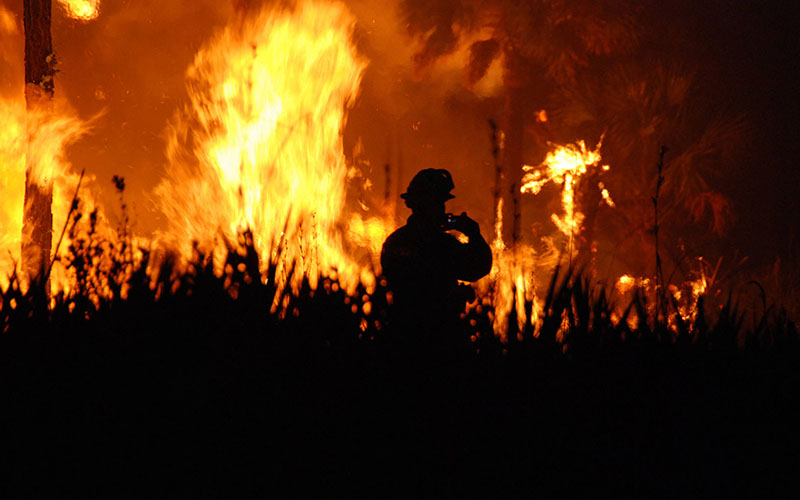
The Forest Service finished fiscal 2019 without burning through its firefighting budget for the first time in nine years, and officials hope a new funding formula will keep the service from having to resort “fire borrowing” of funds in the future. (Photo courtesy U.S. Fish and Wildlife Service)
WASHINGTON – For the first time in nine years, the U.S. Forest Service ended the fiscal year without depleting its fire suppression budget and having to borrow money from other projects to continue fighting wildfires.
Experts credit cooler and wetter weather that helped suppress wildfires around the country this year, and said they expect coming years will again see more costly firefighting operations.
But they also hope that the service may have turned a corner by ending this year in the black, just as a new funding formula takes effect that should prevent such “fire borrowing” in the future.
“I think it’s good news from a lot of perspectives that they’re ending up in the black this year and didn’t have fire borrowing,” said Zander Evans, executive director of the nonprofit Forest Stewards Guild, before adding that any future fire season “is unlikely to be this good.”
“In some ways, we got lucky,” he said.
The National Interagency Fire Center reports that since Jan. 1, there have been nearly 44,000 wildfires that burned more than 4.5 million acres of land across the U.S. That compares to more than 50,000 fires that covered more than 8 million acres at the same time last year.
A Forest Service spokeswoman said the drop in fires this year is due in part to cooler temperatures in the Southwest, increased snowpack in the Northwest and more precipitation in the Southeast.
That allowed the Forest Service to avoid resorting this year to “fire borrowing,” which it has been forced to do in 13 of the last 17 years.
Fire borrowing describes the practice of pulling funds from unrelated Forest Service projects around the U.S. after the agency has exhausted its main and reserve funding to contain or extinguish fires. In Arizona, for example, fire borrowing in the past has affected projects ranging from forest maintenance to trails to habitat for the threatened Chiricahua leopard frog.
But lawmakers and experts hope fire borrowing will become a thing of the past. Beginning this year, the departments of Agriculture and the Interior will be able to tap a separate $2.25 billion fund to continue firefighting once the Forest Service’s $1 billion main suppression fund has been exhausted. That fund is scheduled to grow by $100 million a year for the next seven years.
Arizona lawmakers welcomed the so-called “fire-funding fix,” even as they said longer-term solutions are needed.
Ben Goldey, spokesman for the Western Caucus, said the caucus chairman, Rep. Paul Gosar, R-Prescott, supports “any measure” to improve land management.
“The Forest Service needs flexibility and the proper tools to manage overgrown forests and brush lands that help fuel catastrophic wildfires,” Goldey said. “Fire borrowing is the unfortunate result of years of failed forestry policies, diverting much-needed funds for wildfire suppression.”
Rep. Raul Grijalva, D-Tucson, said increased funding for fire suppression is always welcome, but he is not sure the fix is a long-term solution. He said other federal agencies, such as the Federal Emergency Management Agency, should shoulder more the cost of wildfires.
“These are natural catastrophes that we should respond to and not be robbing the Forest Service budget of other things,” he said.
While fires were down nationally, Arizona has seen nearly twice as much fire activity this year as last, according to Tiffany Davila, public affairs officer for the state Department of Forestry and Fire Management.
She said heavy monsoons in late 2018 spurred plant growth and pushed back this year’s monsoon season. But the wildfires have since caught up, burning around 365,000 acres have burned in Arizona in 2019 – nearly twice the acreage that burned at the same point last year.
“We’re starting to see drought conditions affect the state again,” she said.
Bryan Henry, a meteorologist with the National Interagency Fire Center, said the state’s current dry conditions, if they continue, could lead to a more active fire season in 2020.
“We’re not seeing a whole lot of precipitation coming to the southwest over the next couple of months, so that could be a little bit of a concern as we head into the fire season next year with the vegetation starting out a little bit on the drier side,” Henry said.
